If you're looking for an easy way to preserve potatoes for long-term storage, dehydrating is the way to go!
Whether you have a big bag of potatoes that you don't want to waste or you're prepping your pantry for easy meal ingredients, drying cubed potatoes is a simple and effective method.
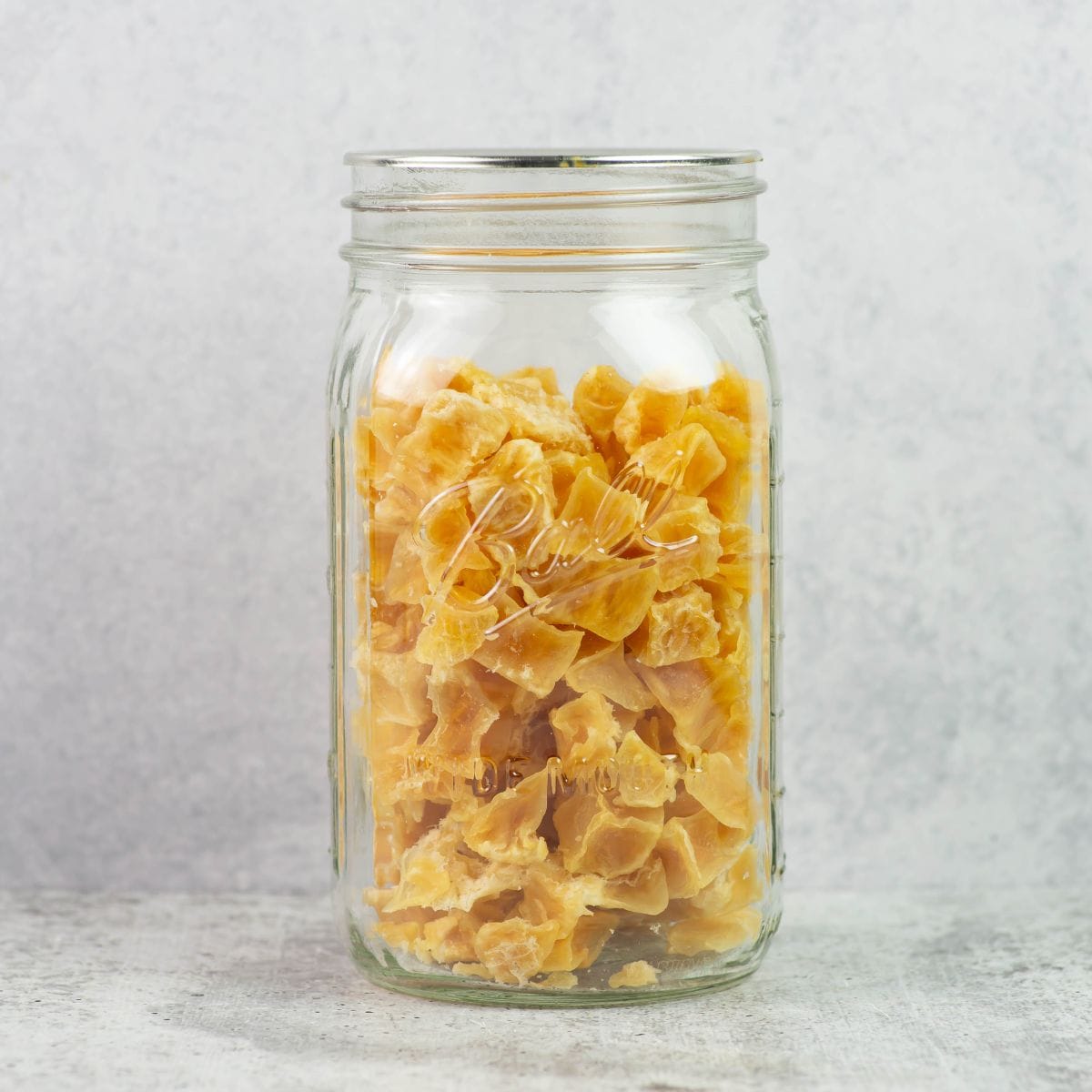
Dehydrated potatoes take up less space than raw or frozen potatoes, don't require refrigeration, and are ready to toss into soups, stews, or casseroles whenever you need them.
I'll walk you through the steps to prep, blanch, and dry your potatoes so they store well and rehydrate perfectly when it's time to cook!
You will always have a ready stash of dehydrated potatoes on hand in the pantry with dried cubed potatoes, dried shredded potatoes for hash browns and scalloped potatoes for casseroles to make all of your favorite recipes and never have to worry about having a bag of fresh potatoes on hand.
If you like to go camping you can make this instant Dried Vegetable Soup Mix to take along.
Jump to:
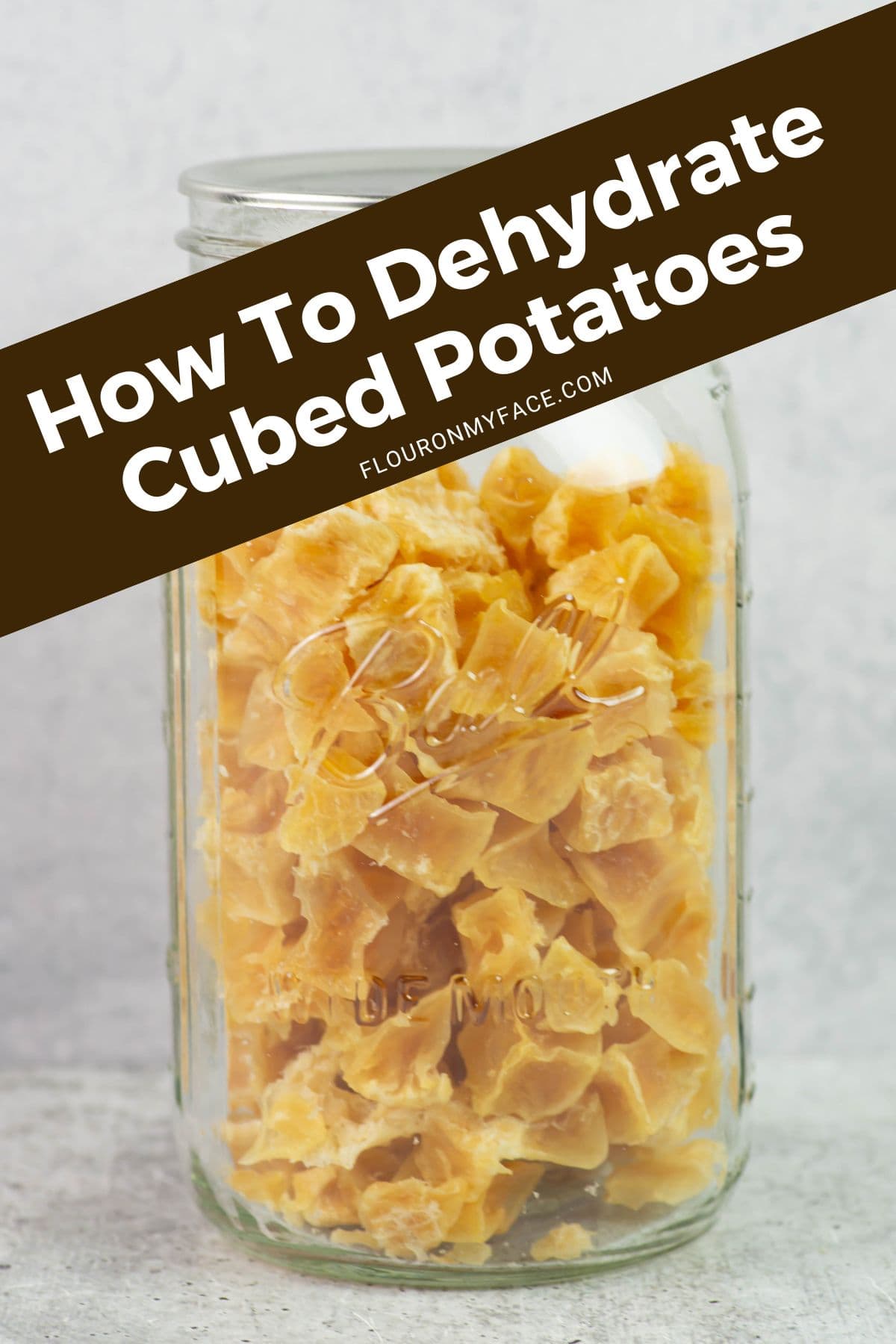
What you'll need
Before you start, gather these supplies to make the process smooth and efficient:
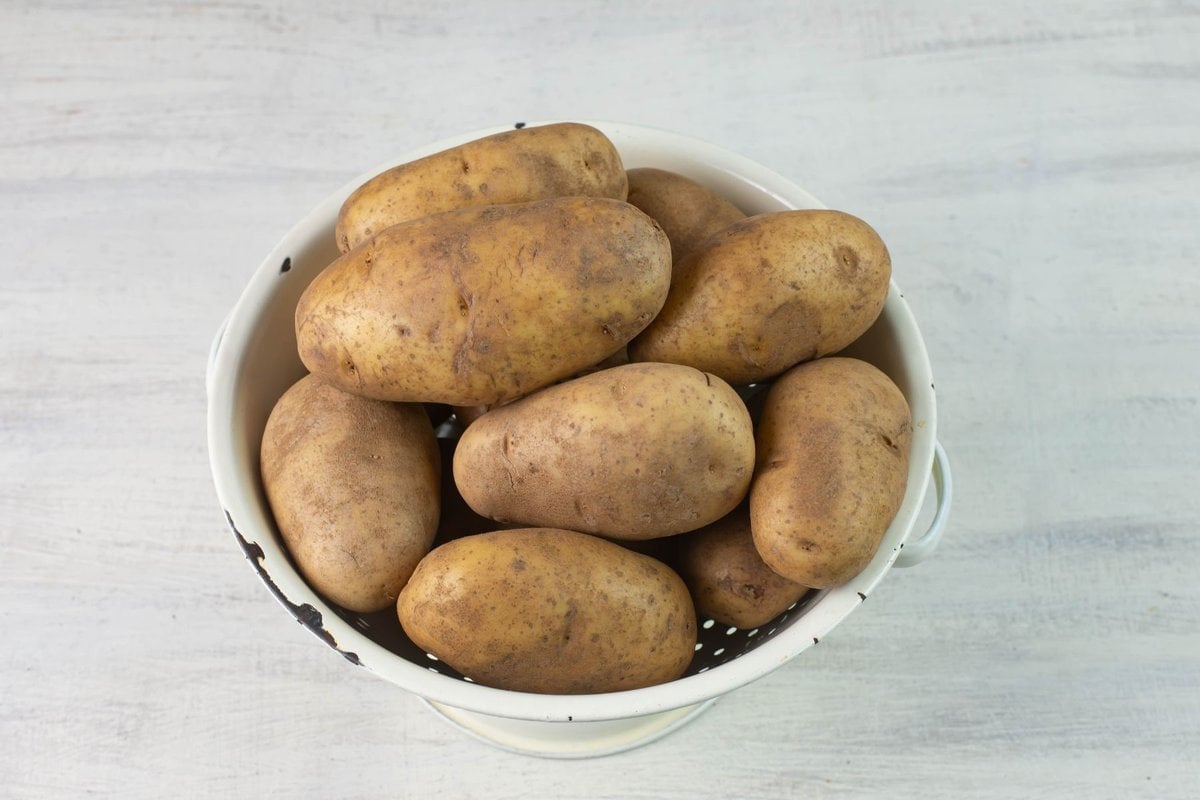
Ingredients & Equipment
- Large Russet Potatoes - I used this type of potato because they hold their shape better and do not turn soft and mushy from the blanching process.
- Water: I rinsed the peeled and cubed potatoes well to remove as much starch as possible. You will also need enough water to fill the blanching pot and ice bath.
- Salt: To salt the blanching water.
Below is a list of equipment I used. I've included other options when available.
- Cutting the potatoes: You will need a sharp paring knife, a vegetable peeler and or a vegetable chopper: I love this Quick Push Vegetable Chopper and use it every time I need to cube or dice a large amount of vegetables I am freezing or dehydrating. It makes the process go much faster than using a knife and the pieces are cut the same size.
- Plastic Sink Basin: I buy these at the dollar store for just a couple of dollar each. I use 2 or more each time I am dehydrating. They come in very handy for washing vegetables to using it for an ice bath when blanching.
- Large Stock Pot: You will need a large stock pot for blanching. I use a 12 quart stock pot. You may need to blanch in batches depending on how large a batch you will be dehydrating.
- Dehydrator - I have this round Presto dehydrator and a 9 tray Excalibur food dehydrator with adjustable temperature settings and timer. I like these models best.
- Parchment Paper or Mesh Sheets - Helps prevent smaller pieces from falling through trays. I have never used parchment paper. The Excalibur comes with the tray liners and I bought round ones that fit the Presto.
- Airtight Storage Containers - Mason jars, vacuum-sealed bags, or quart size mylar bags with oxygen absorbers for long-term storage.
Important prep tips
Some of the prep steps needed will be slightly different depending on the kitchen tools you have to use. The size you cut the cubed potatoes will play a roll in how long to blanch them and dehydrate them. So if you are using a knife try to cut all the pieces the same size.
After years of chopping vegetables I've learned to always use my vegetable chopper whenever I am cubing or dicing vegetables to dehydrate, cook or can. It is so much faster when I need to prep a large amount of vegetables.
- Prep Step 1: Scrub the outside of the potatoes well to remove any dirt. I like to use a large plastic tub that fits in my sink to soak and wash the potatoes in.
- Prep Step 2: Fill a large bowl with cold water and set aside. Use a paring knife or a vegetable peeler to peel the skins from the potatoes. Cut out any "eyes" As you peel each potato drop it into the bowl of water to prevent it from browning. Peel and soak all of the potatoes.
- Prep Step 3: Cut the potatoes into 1x1 inch cubes. If using a knife try to cut the cubes into the same size pieces. This is pretty difficult to do by hand that is why I prefer using the vegetable chopper I mentioned above.
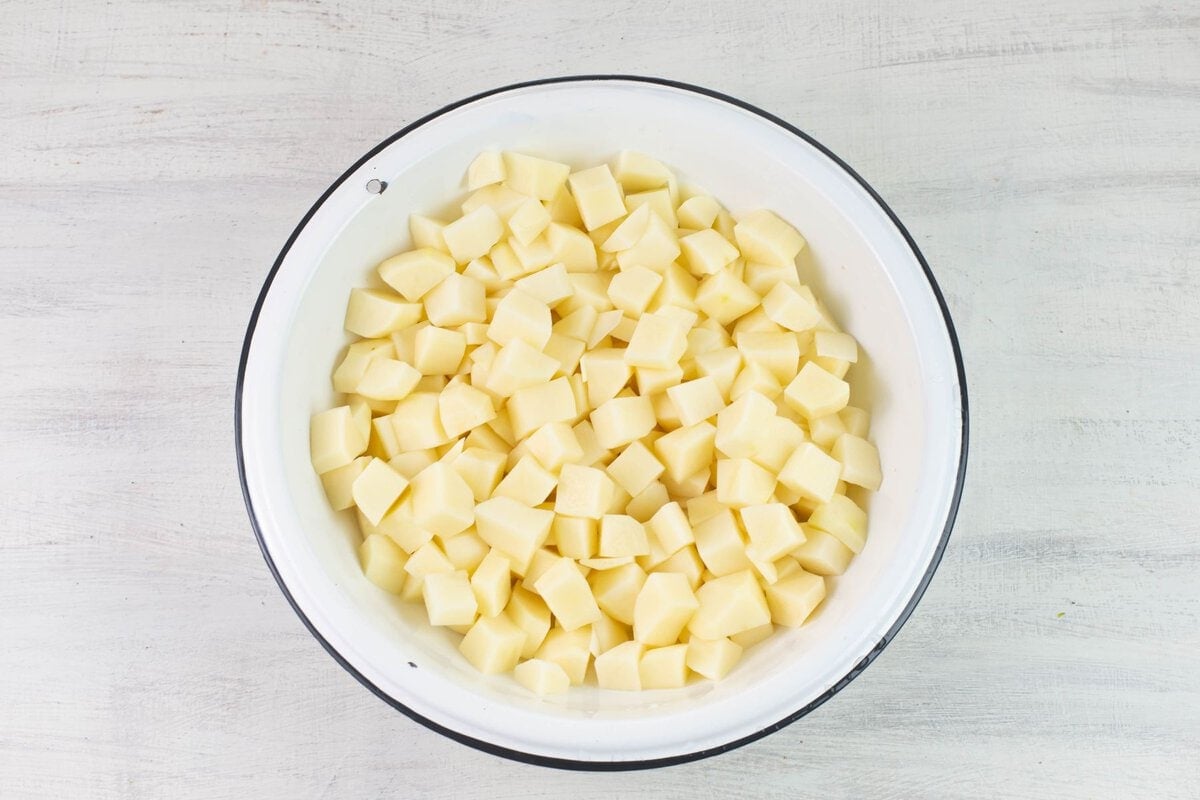
- Prep Step 4: Blanching-Fill a large stock pot ¾ full and add a tablespoon of salt to the pot. Bring the water to a full boil. Add as many of the potatoes pieces as possible without over flowing the pot. Bring the water back to a full rolling boil. Once boiling set a timer for 4 minutes. (See tips below about the best type of potato to use for dehydrating.)
- Prep Step 5: Once the timer goes off immediately strain the cubes in a colander and dump them into an ice bath. This is where an extra plastic tub comes in handy. I fill a tub (or you could use a clean sink) half way with ice cubes and dump the hot spuds in. Then I fill with cold water until covered. This will immediately stop the cooking process and cool the cubes before dehydrating.
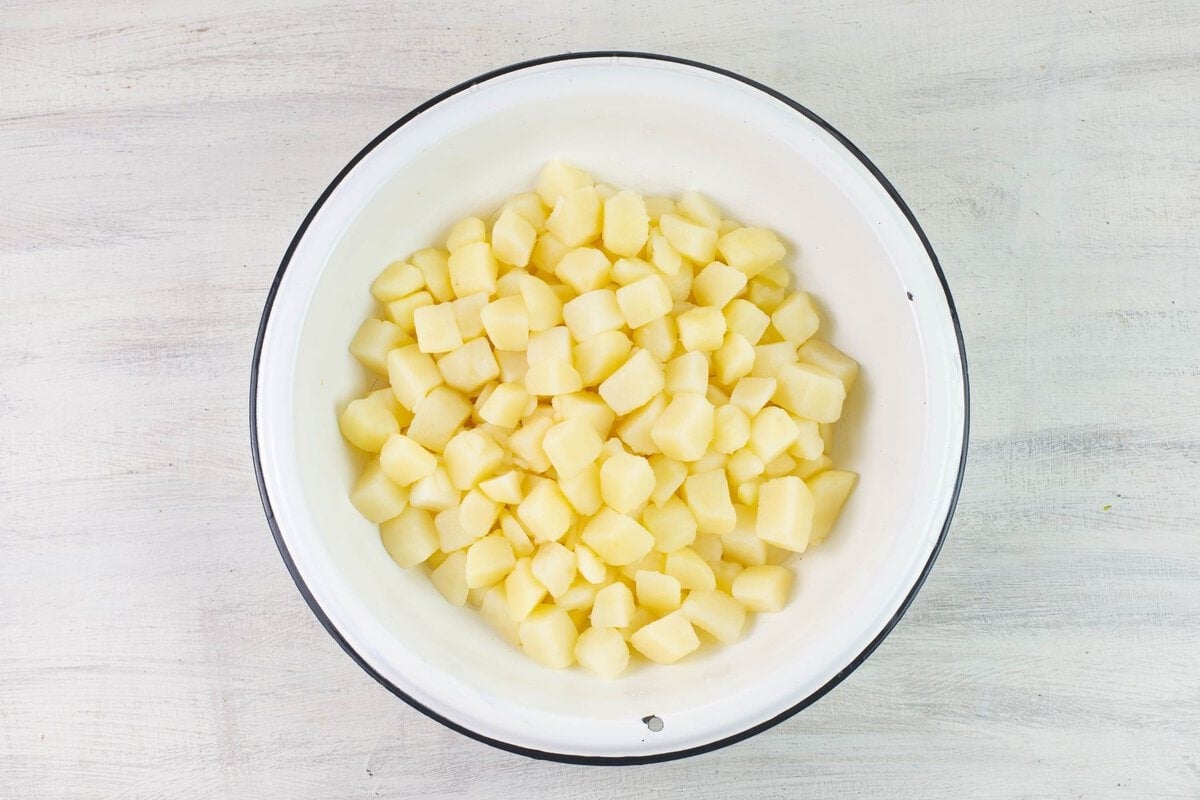
Detailed step by step dehydrating directions
Once you have finished the prep steps its time to dehydrate the cubes.
- Step 1: Spread the pieces in a single layer (not touching as much as possible), on the drying trays that have been lined with mesh tray liners. If you don't have liners you can use parchment paper but it will take longer to dry. The liners have holes which allow for air flow that speeds the drying time.
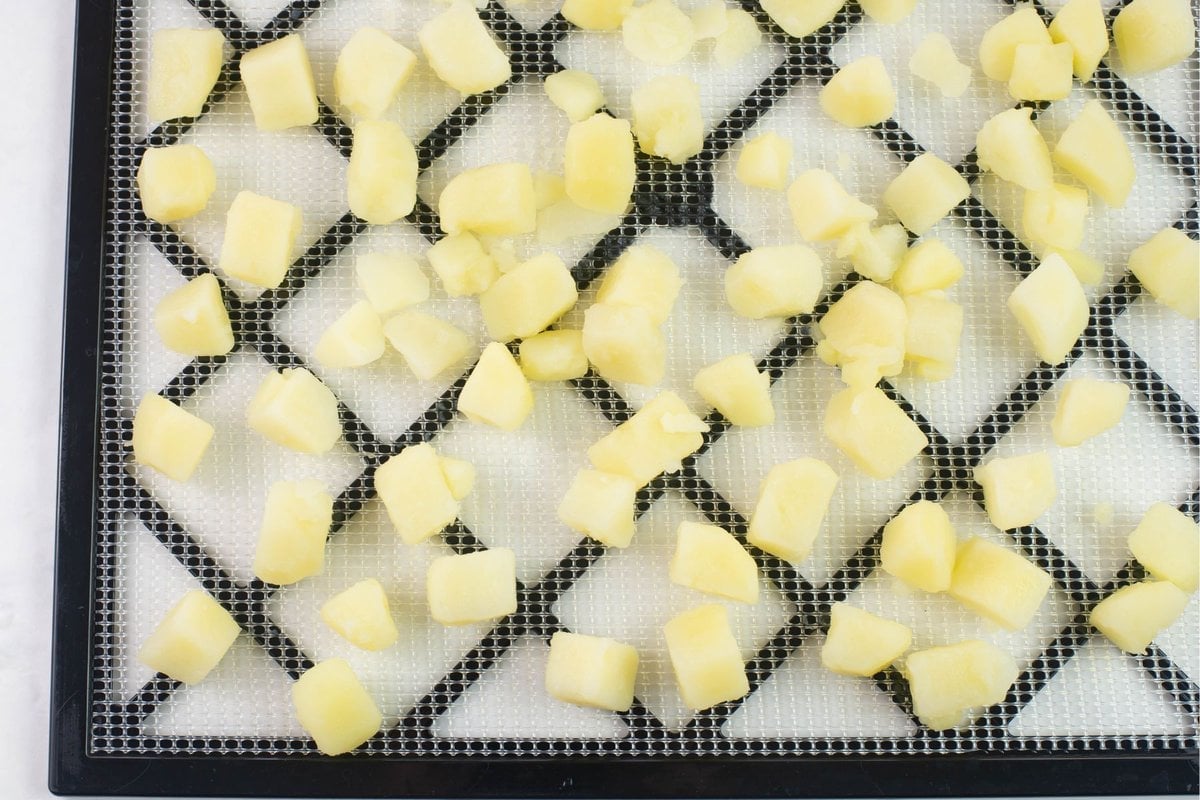
- Step 2: Load the trays and put the lid on. Set the temperature to 125 F. degrees if your appliance has a temperature setting. Set a timer for 12 hours. This is a estimate of the time it will take.
- Step 3: After 4 hours check on the trays. Flip the pieces over and rotate the trays. This will help speed along the drying process and help evenly dry the cubes. If your dehydrator does not have a temperature control setting you will need to check for doneness more frequently. These models run at a much higher temperature. Check every couple of hours.
- Step 4: It took my cubed potatoes 9 hours to dry completely. They should be hard through the center and not feel mushy when squeezed between two fingers. If you feel any amount of "give" they are not completely dried. Continue dehydrating them until hard in the center.
- Tip: You can remove the smaller pieces as they get done and only return the larger pieces that need more time in the dehydrator.

- Step 5 Cooling: Once done it is very important to allow all of the pieces to cool completely to room temperature before storing them in an airtight container. You should also condition them before long term storage.
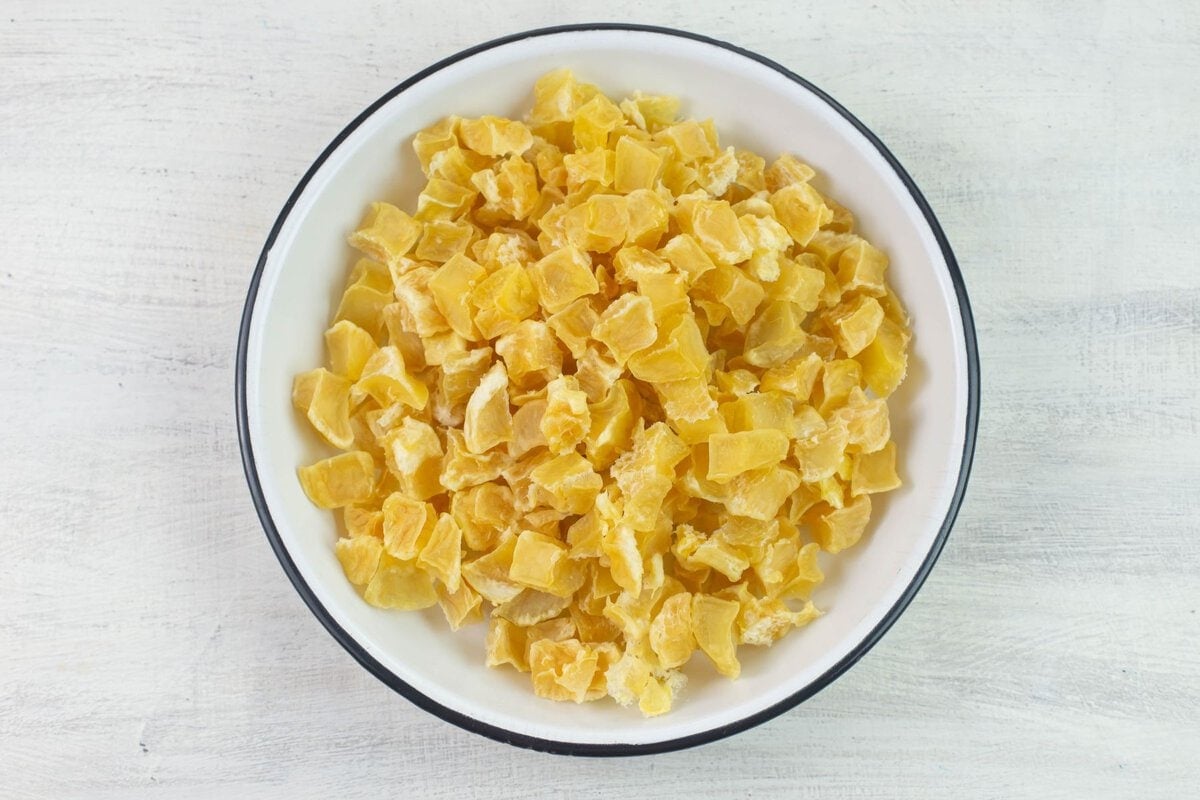
FREE Dehydrating Quick Guide
If you are new to dehydrating as a preservation method you might like my guide that will help you get started.

Storage Options
After all of the work you just put into drying cubed potatoes if you don't store them properly you will quickly find out that you wasted your time and money. All dehydrated foods need to be stored in airtight containers. Below I share tips for the most common storage options.
- Zip topped bags: This type of storage baggie is only recommended if storing for a very short period of time before consuming (about a week). They are not airtight. Air and moisture can seep in and cause the food item to absorb moisture and very quickly start to mold.
- Mason jars: Canning jars with a vacuum sealed lid is my most often used storage method but the jars take up a lot of space. And because they are glass there is always a chance they can get broken. I put my jars into a pantry style cabinet dedicated to my dried storage.
- Mylar bags: Make sure you buy puncture resistant. Detailed labeling is a must because you can not see through these food storage bags which is one of the reasons I have always used jars. You can't see what you have put in the bag and on the off chance the food was not properly dehydrated you will not see any moisture forming or the food going bad.
- Vacuum sealer bags: Not recommended-I have tried vacuum sealing my dehydrated orange slices and lime slices along with other fruits and vegetables. The plastic vacuum sealer bags are easily punctured by the sharp pointy edges of some dehydrated foods. I don't recommend using this type of bag for storage.
Buy the instant download dehydrated potato label to keep your food storage pantry organized!
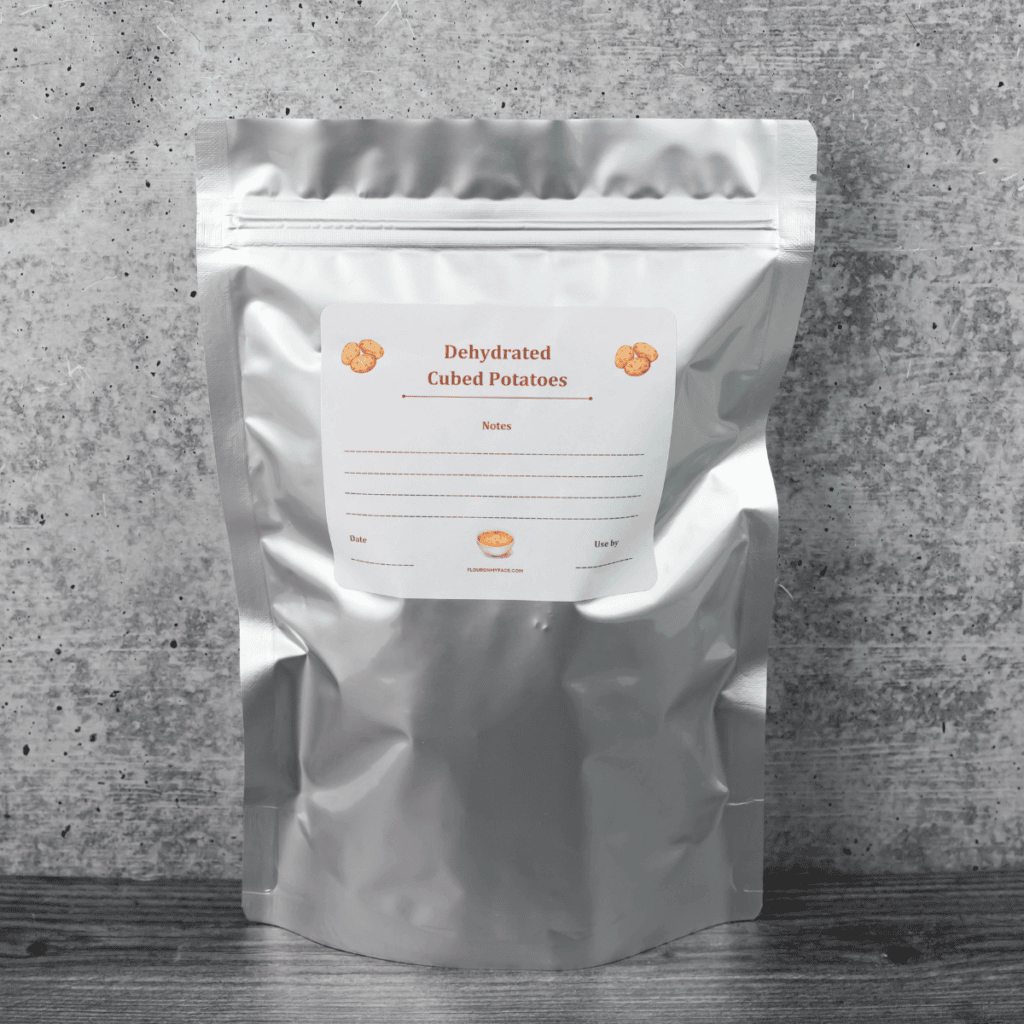
Dehydrated Cubed Potatoes Mylar Bag Label
This easy-to-read label helps you keep track of your dehydrated potato cubes, making meal prep and inventory checks simple.
Rehydrating Potatoes
How do I rehydrate dehydrated cubed potatoes? This is one of the first questions I get asked. Rehydrating dried potatoes or any other dehydrated vegetable is very easy.
- If you are adding the cubed potatoes to a soup, stew or other recipe that is made using a large amount of liquid you can simply add the dried potatoes to the pot in the last 30 to 60 minutes of cooking time and they will absorb some of the liquid and cook right along with the rest of the ingredients.
- If you want to use them for another type of recipe like making garlic potatoes or a casserole dish place the amount you need in a bowl and pour boiling water over to cover. Allow to steep for 20 to 30 minutes or until they have softened. Squeeze a few pieces to see how soft they have gotten. Drain the water and use as needed.
Dehydrating Tips
- Best potato variety: I have found that the best kind of potato to use are russet. The high starch content helps them stand up well to blanching without quickly over cooking. They keep their shape and don't fall apart like a lower starch potato. But if you do over blanch them they will not hold their shape and will get soft and mushy. So make sure you do not over blanch them (use a timer) and be sure that the cubes are about 1x1 inch cubes.
- Cutting the cubes: A sharp paring knife and cutting board will work but over the years to save time I started using a vegetable chopper. It saves me so much time because it is quicker and most of the pieces are cut the exact same size.
- You can turn dehydrated potatoes into instant mashed potatoes by blending them into a powder then adding boiling water to the potato powder to reconstitute them!
FAQ's
First you should always keep peeled uncooked potatoes in a bowl of cold water to stop the oxidization process that causes them to turn brown once you have peeled them. Then blanching them or partially cooking them before dehydrating will prevent them from browning or turning black during the slow dehydrating process.
Yes! Blanching helps preserve the color, texture, and flavor of the potatoes while also reducing the risk of them turning an unappetizing gray or black during dehydrating or storage. It also helps them rehydrate faster and more evenly when you're ready to use them.
When properly dried and stored in an airtight container in a cool, dark place, dehydrated potatoes can last anywhere from 12 months to several years. Using a mylar bag, or adding an oxygen absorber to your storage container will help extend their shelf life even longer.
⭐Leave a Star Rating: Have you tried the recipe? Leave a star rating in the recipe card below to let me know how the recipe turn out.
Email questions or recipe requests to flouronmyface@gmail.com. Follow me on Pinterest, YouTube, Instagram and Facebook.
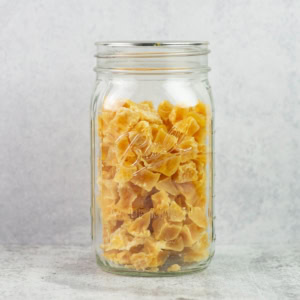
How To Make Dehydrated Cubed Potatoes
Ingredients
- 4 lbs. Russet Potatoes
- 8 quarts water
- 1 tablespoon salt
Instructions
Prep Steps
- Scrub potatoes thoroughly to remove dirt. Soaking them in a tub of water makes this easier.
- Peel potatoes, removing any eyes, and place them in a bowl of cold water to prevent browning.
- Cut potatoes into 1-inch cubes, aiming for uniform size for even cooking. A vegetable chopper works best.
- Boil a large pot of salted water. Add potatoes and blanch for 4 minutes once the water returns to a rolling boil.
- Immediately transfer potatoes to an ice bath to stop cooking and cool them before dehydrating.
Dehydrating Steps
- Spread potato cubes in a single layer on mesh-lined dehydrator trays. Avoid overcrowding for better airflow. Parchment paper works but slows drying.
- Load trays, cover, and set the dehydrator to 125°F. Dry for about 12 hours, checking periodically.
- After 4 hours, flip the cubes and rotate trays for even drying. If your dehydrator lacks temperature control, check more often.
- Potatoes should be completely hard with no softness in the center. Remove smaller pieces as they finish and continue drying larger ones.
- Let potatoes cool completely before storing in an airtight container. Condition them before long-term storage.
Recipe Expert Tips
- Russet potatoes: I have found that these potatoes are the best for drying.
- If using a dehydrator without a temperature setting you will need to check for doneness every couple of hours.
- Cubed potatoes can be prepared ahead of time and frozen until you're ready to dehydrate them. Just thaw over night and drain before blanching.
- Drying times are estimates. There are variables that will play a part in how long it takes.



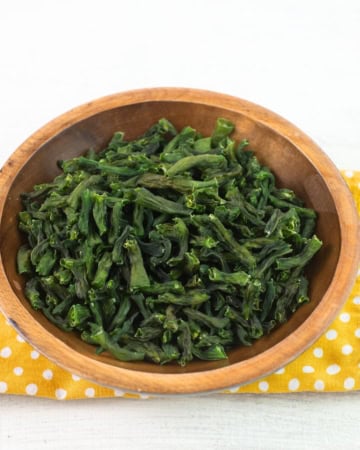
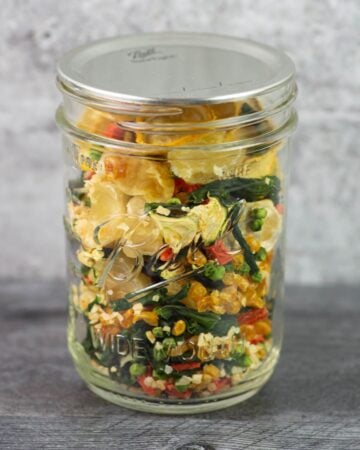
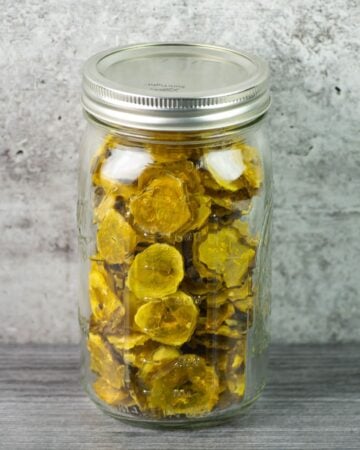
Julie
What a clever idea, such a space saver.